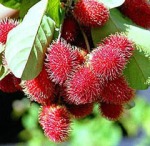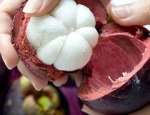Back from Bali…
I recently got back from 5 weeks in Bali, cooking on another Frog Lotus Yoga Teachers Training with Vidya, and it was an amazing time. A lot of the great Balinese vegetarian dishes are delicious and very simple to make so I will post some recipes after I have test driven them in my own kitchen.
I can’t stress enough how different it was to cook in a Balinese kitchen from a Costa Rican kitchen! Bali is just 8 degrees South of the Equator, while Costa Rica is 9 degrees north, so the climate is similar, the foliage is similar, everyone eats rice three meals a day, and many of the local fruits and veggies are the same. HOWEVER, all that being said, it’s just totally different.
The first thing is the speed in which everything is cooked. In Costa Rica, where simmering beans is a daily ritual and propane is the fuel of choice, I sometimes had a hard time getting water to boil. In Bali, as in most of Asia, cooking things very fast on a very high flame is the norm. Most dishes are either boiled or blanched in water, or stir-fried in a giant wok over a huge fat turbo ring burner which is scary hot and amazingly fast. The flip side of that is that there is not much of a concept of slow cooking, and since a lot of the richness and flavor for (non-Asian) vegetarian cooking is developed by slow cooking – caramelizing onions and garlic, reducing all the water out of zucchini and carrots in order to develop a deeper or richer flavor for things like taco fillings – I had a real challenge.
First because there is no equipment for it – the Balinese either cook in a wok, or they boil in water in incredibly thin bottomed pots which burn everything instead of cooking – so, by necessity, I learned to simmer in a wok, which sort of works, if you have two…
Second because the Balinese chefs, as skilled and professional and well meaning as they are, are all conditioned to cooking super-hot and stirring constantly, and it was difficult to get them to stand away from the wok and let things cook slowly without them stirring it every minute. I had to find ways to distract them with other projects to get them to leave the stove alone!
The Balinese kitchen team I was working with was amazing. The Balinese have an incredibly aesthetic culture, and take great pride in doing everything beautifully, perfectly, by hand. (Which is also quite different from the Costa Ricans, who are fine to throw everything in a pot, then in the food processor and serve without ceremony.) Everything in Bali is done meticulously, and a bit ceremoniously. As an ex-pastry chef, I am used to being the one in the kitchen that all the other chefs make fun of for being uber-meticulous, but working with the Balinese chefs and the level of detail and care they put into every little thing put me to shame. And, amazingly, they do this without any attitude about it, (or attitude towards me when I decided it was more important to get the food out for 40 people than to make sure that last carrot got cut perfectly). It was fantastic to work with them.
Also, even though I was working in a brand new kitchen which was bright, clean and modern, the Balinese attitude towards equipment is very very different from my American one. They are incredibly industrious and creative about getting by with whatever they have on hand. So if you have one big spoon the stir the pot, why would you need two? You just wash that one and use it again. This was a constant challenge for me because, well, I am a sloppy cook and would rather have 4 spoons on hand so I don’t have to look for one for very long, or wash it before I use it! So I spent the first week discovering what equipment the kitchen did not have (usually at the last minute) and working with Ketut, my Balinese chef, to find some sort of alternative. Some things I never found, and learned to live without – a big colander for instance – there is no concept of the need for something to drain pasta for 35 people in – they take care of most orders a la carte, boiling a small pot of water and cooking little batches of pasta for 1 – 4 people at a time, which then get fished out with a small wooden handled strainer. Over time I started to do the same.
(In retrospect, it must have been hilarious to see me trying to communicate what I thought I needed using Kitchenese, our shared mix of broken English and pantomime, which as mangled as it was, was also surprisingly effective).
I spent the second week trying to procure the equipment and items I determined were really necessary to cook vegetarian food for 40 people. A food processor, for instance, made it to the top of the list after a valiant attempt at making hummus and felafel using a hand grinder attached to a wooden sawhorse…
The third week I was in the rhythm enough to really begin to enjoy the incredibly industrious and exotic vibe of a Balinese kitchen. By then we all had some idea of what we were doing – Ketut knew what to do to make a Raw Zucchini Lasagna, and I was happy to turn over all the Balinese and Asian menu over to the kitchen so I could watch how they prepared traditional specialties like Gado Gado or stewed banana stems.
Bali has some of the most amazing fruit! Here are my favorites:
Rambutan – a bit of a punk rock Lichee. Peel off the red spiky exterior to reveal a sweet delicately fragrant fleshy …well, eyeball inside. Delicious. It’s a major flavoring for Balinese candies and soft drinks.
Bali Salak – if a super-dry crunchy Granny Smith apple could taste like a pineapple and masquerade as a snake egg, this would be it. I love these. They are also sometimes boiled before being eaten, and then they taste like a cooked pear.
Durian – Called the King of Fruits. Super stinky and. I think, divinely delicious. A big green spiky fruit with lovely, avocado-like sweet creamy yellow interior. Totally sexy and just this side of revolting at the same time.
Mangosteen – Also called the Queen of Fruits and with good reason. A blood red hard shelled fruit which must be cracked open carefully to reveal the most incredible, delicate, fragrant, pure white fruit segments. The mangosteen is extremely high in xanthones and is considered a miracle fruit because of its long list of medicinal qualities.
More about all of these fruits can be found at tropical-fruits.biz. Definitely worth checking out.
Unfortunately, most of these fruits are too delicate to ever make it to the States. The few pieces of mangosteen and salak I “forgot” in my luggage got sniffed out at JFK by a sweet little beagle with a sharp nose who I befriended before I realized he was gainfully employed by US Customs.






